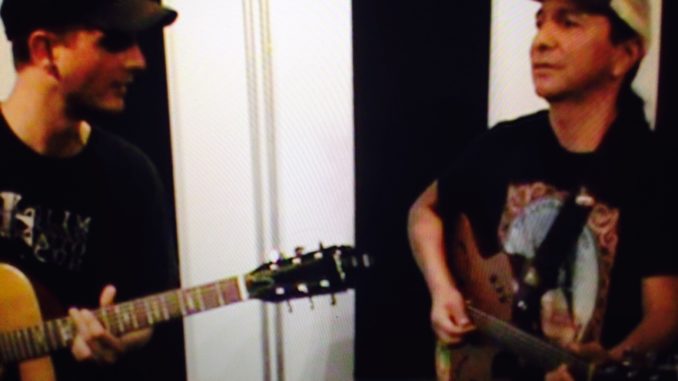
by TIM MASSA
Cary Morin is a local legend. Google him. Do it now, I’ll wait. Impressive, right? He was also part of my inspiration for starting this column, dedicated to guitar technique and experts.
I have admired and been intimidated by Cary’s guitar work for a long time. During FoCoMX last year, with my fair share of liquid courage, I told him I would love to sit down for a lesson with him. Much to my surprise, he said yes. That casual idea evolved into this.
I set out to learn what I could to share it with you, not so we can learn to imitate Cary, because frankly, that is impossible. The key to finding your own voice is trying different tools, and finding what feels right in your toolbox. Cary’s technique and brilliance are guides for the process.
Open Tuning- When I try to describe Cary’s style, the closest I get is saying it sounds like he has too many fingers. I learned that his use of open tuning is essential in achieving that sound. Cary uses a few different tunings, but they are all open major chords, that meaning the guitar will emit a musical and harmonious sound simply by strumming the open strings. The same cannot be said for standard tuning. This is a rare occasion where a beginner has an advantage. My first time doing this technique felt like relearning the guitar.
If you want to experiment with open tunings, you will want to keep your guitar that way for a while to see if it’s for you, but also to let the tension settle.
For this lesson we used an open E major tuning. Only a few strings have to change to achieve this. Low to high, it’s tuned E-B-E-G#-B-E.
Finger Picking- Cary’s thumb is always busy, bouncing back and forth, primarily between the two lowest E strings. He is essentially playing the bass line, leaving his right hand fingers free to pick melodies, making him a one man band.
When you see Cary do it, it goes by fast and he makes it look effortless. He showed me an exercise for developing this skill. Start by alternating between the open E strings, on the beat with your thumb, when you feel comfortable, add an extra note off the beat. (Fig. 1)
This has everything to do with muscle memory, so you can practice passively, meaning, you can do it while watching TV. The goal is to ultimately do it without thinking, so why not practice without thinking? Zen.
Droning Scales- To help you get your bearings, I’ve included a simple, droning E major scale that Cary taught me using this open tuning. (Fig. 2) When you play it you will hear hints of Cary’s fluid style as you let the open strings ring out while you play through the scale.
We have hardly scratched the surface here. Cary is an absolute master, and these are just some of the tools he keeps in his toolbox. We may never sound like Cary, but we can have fun trying.
Support Northern Colorado Journalism
Show your support for North Forty News by helping us produce more content. It's a kind and simple gesture that will help us continue to bring more content to you.
BONUS - Donors get a link in their receipt to sign up for our once-per-week instant text messaging alert. Get your e-copy of North Forty News the moment it is released!
Click to Donate
